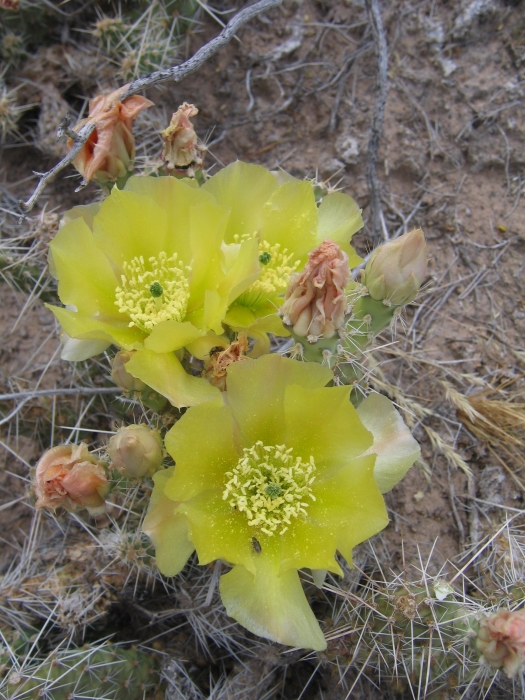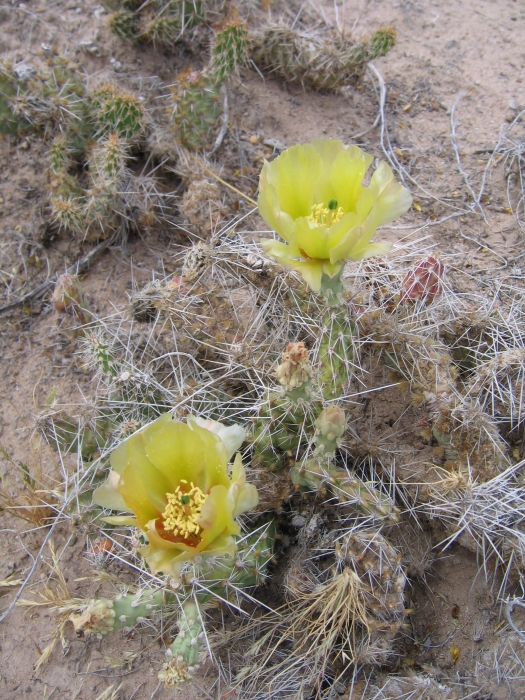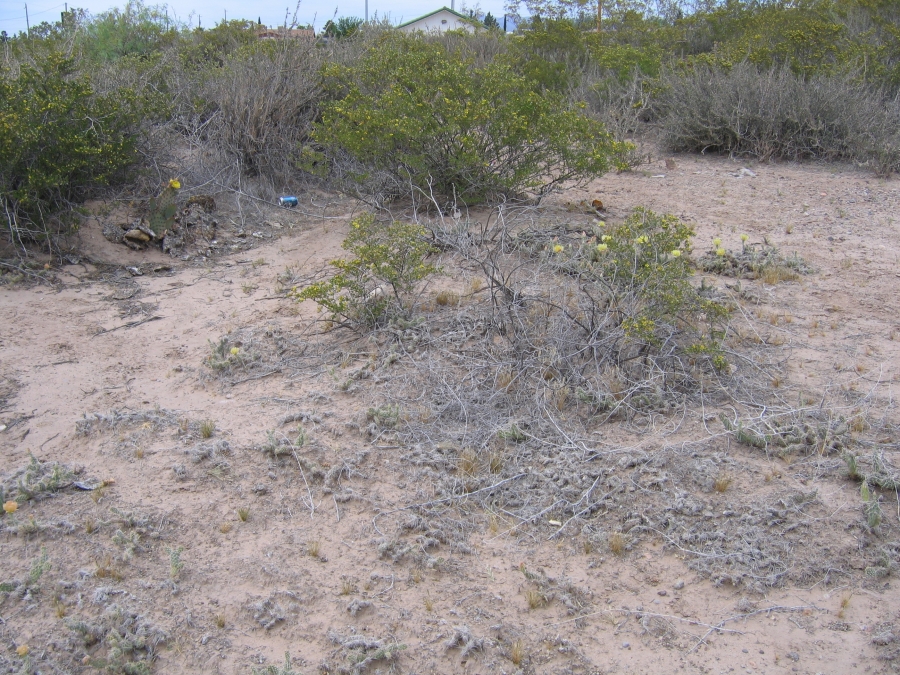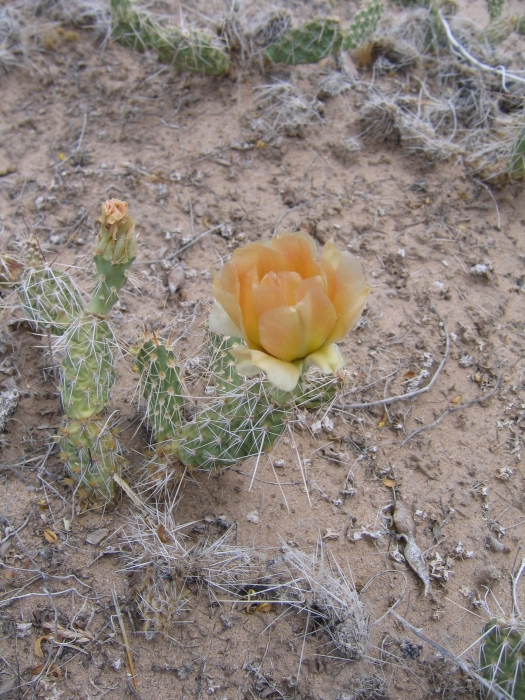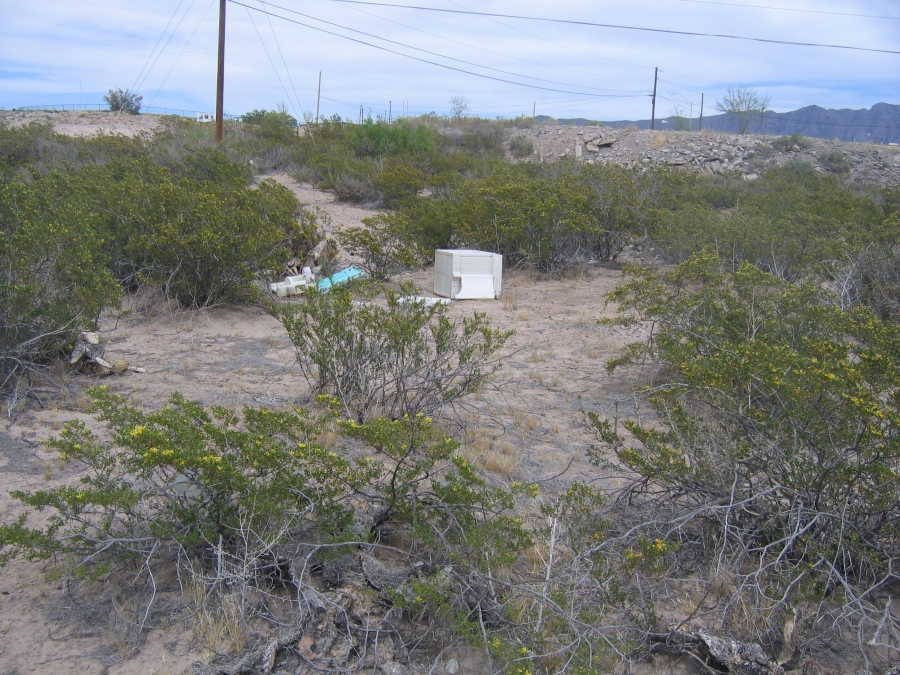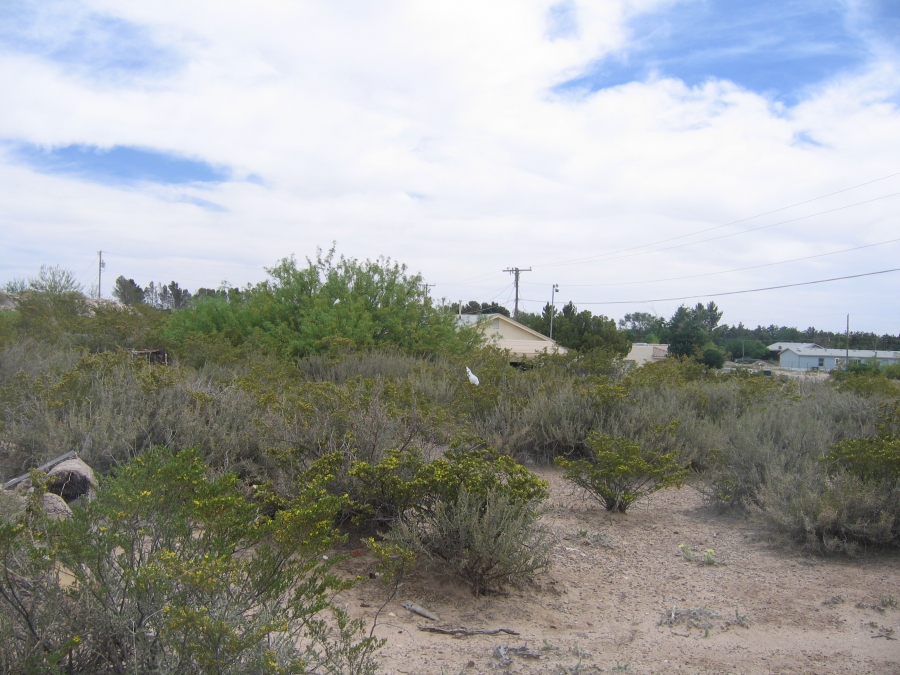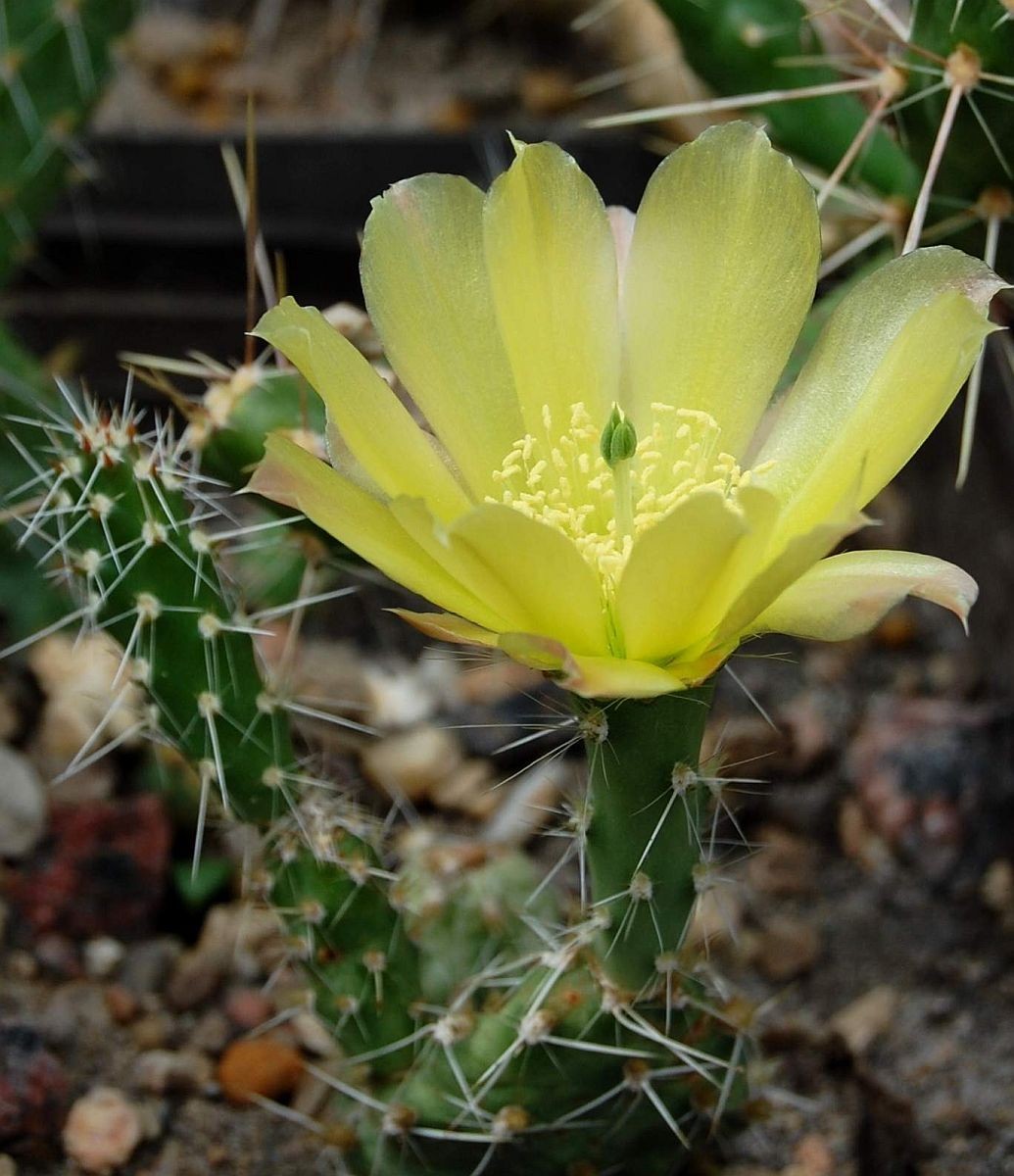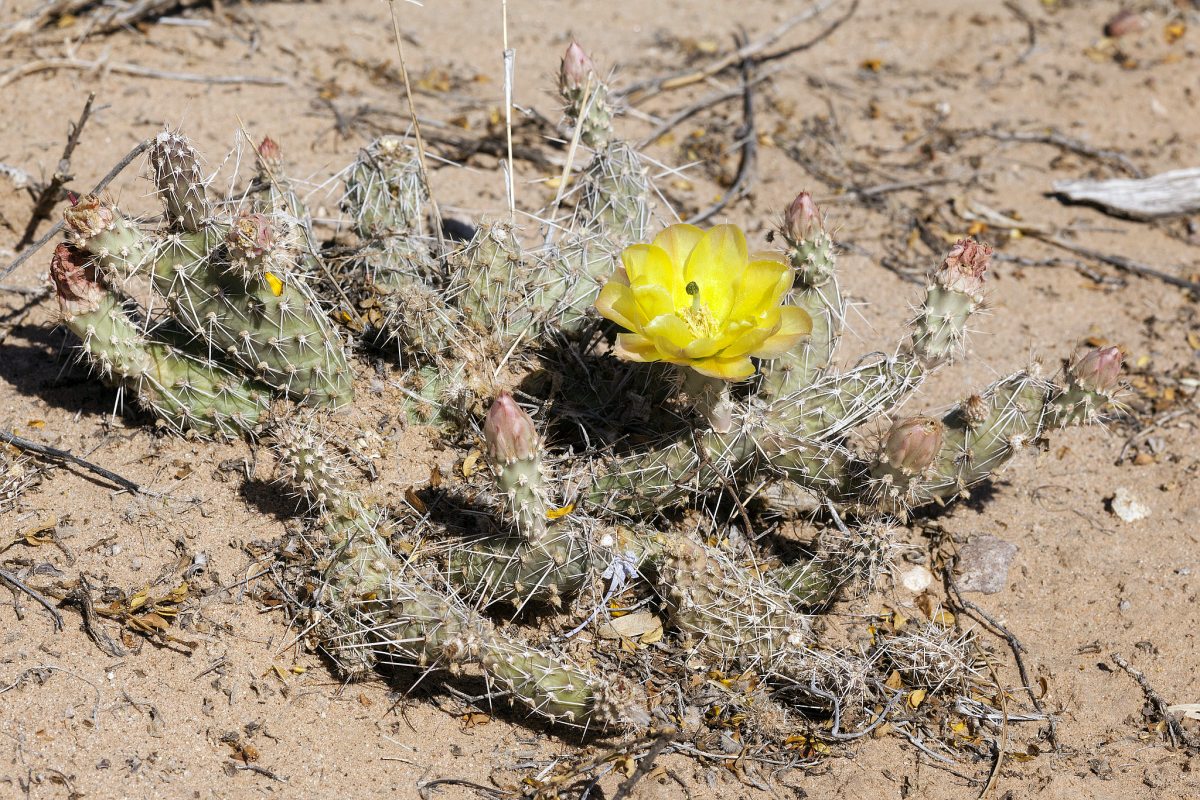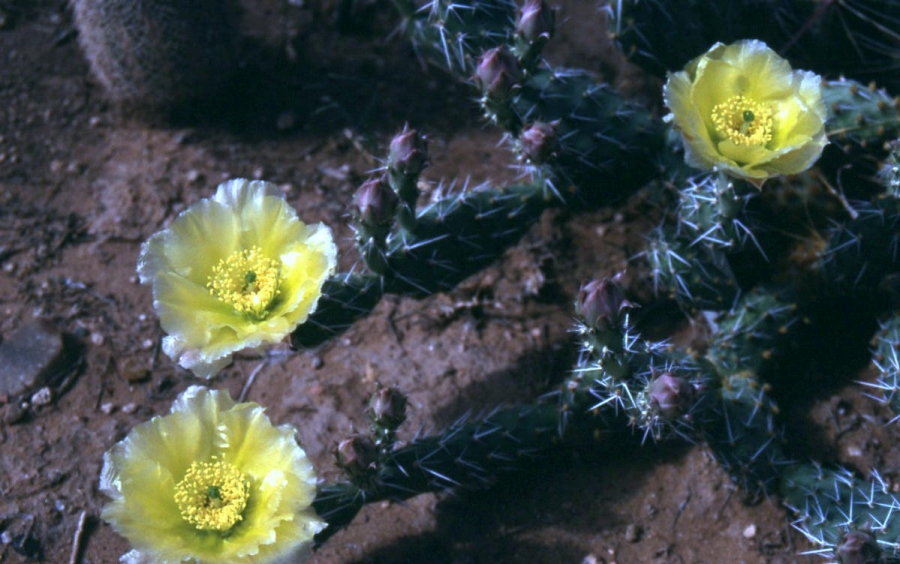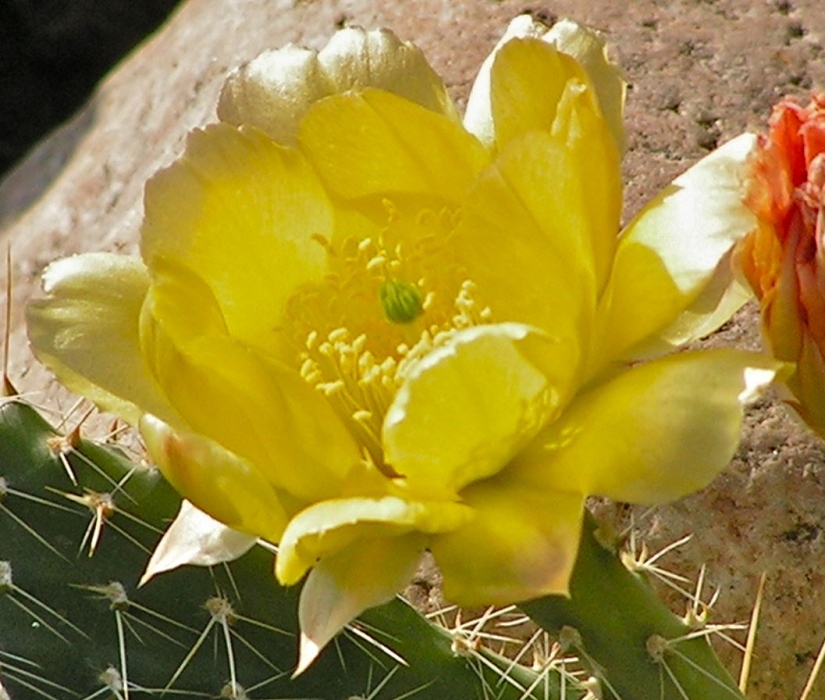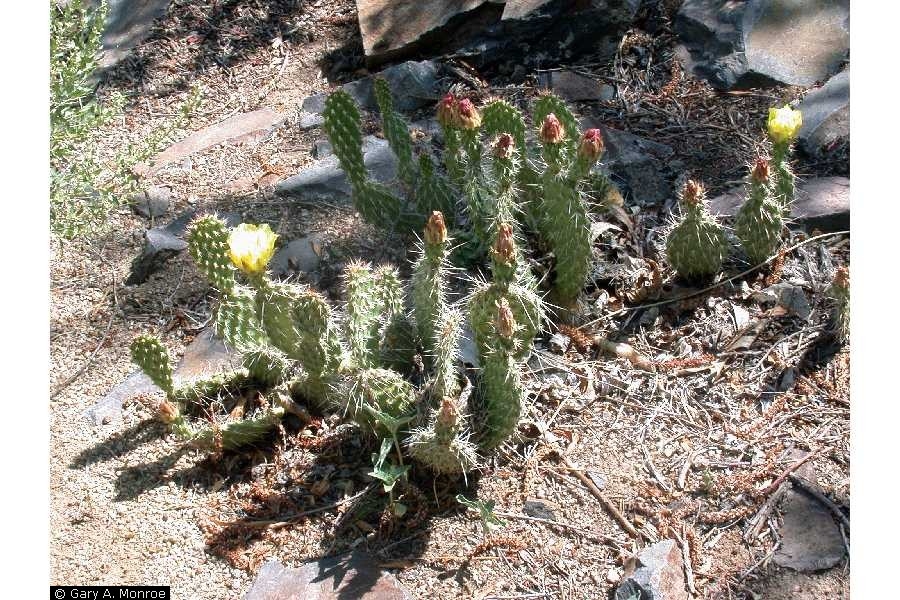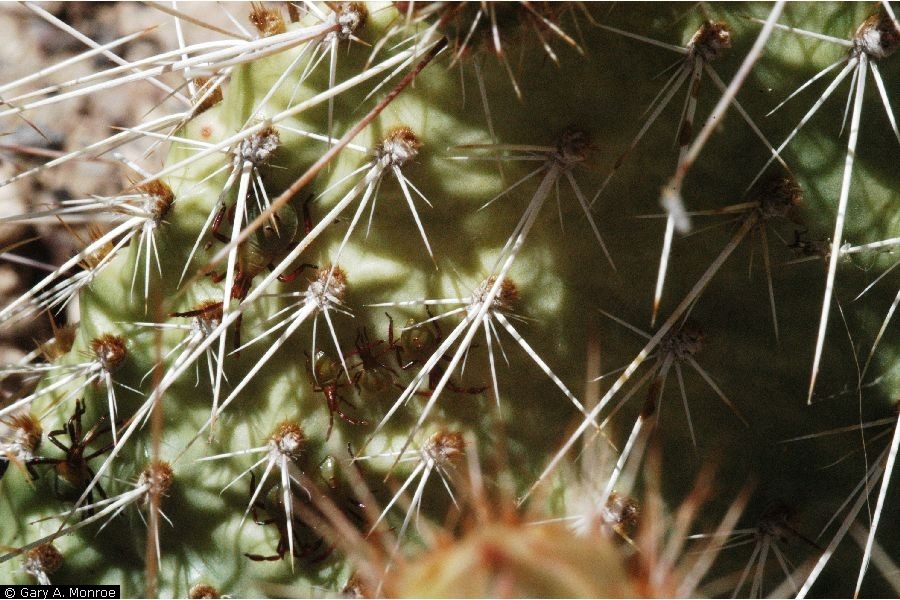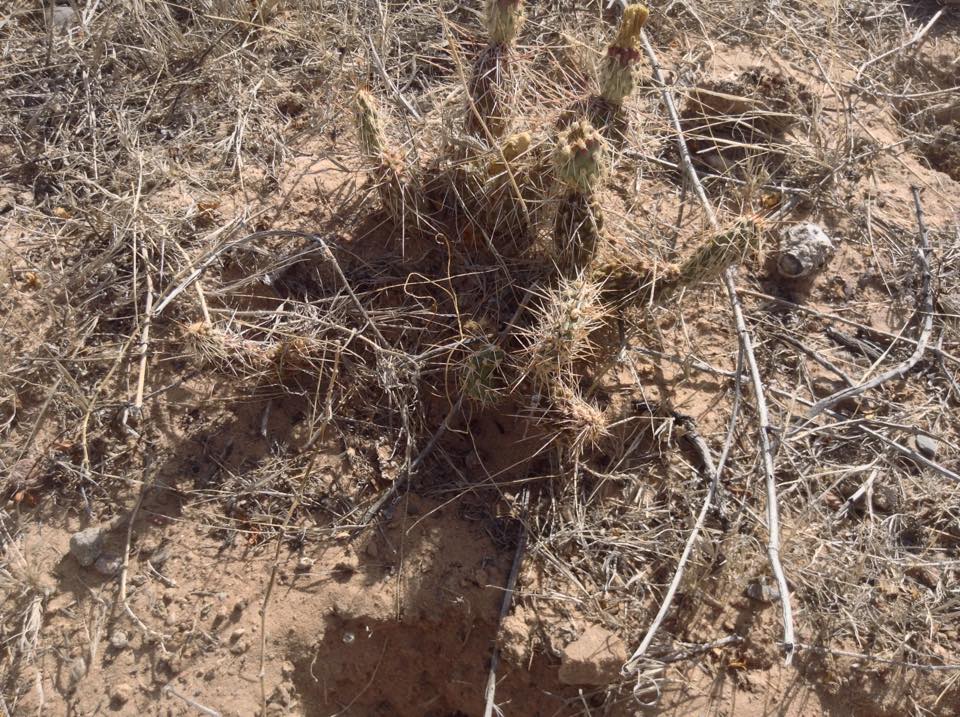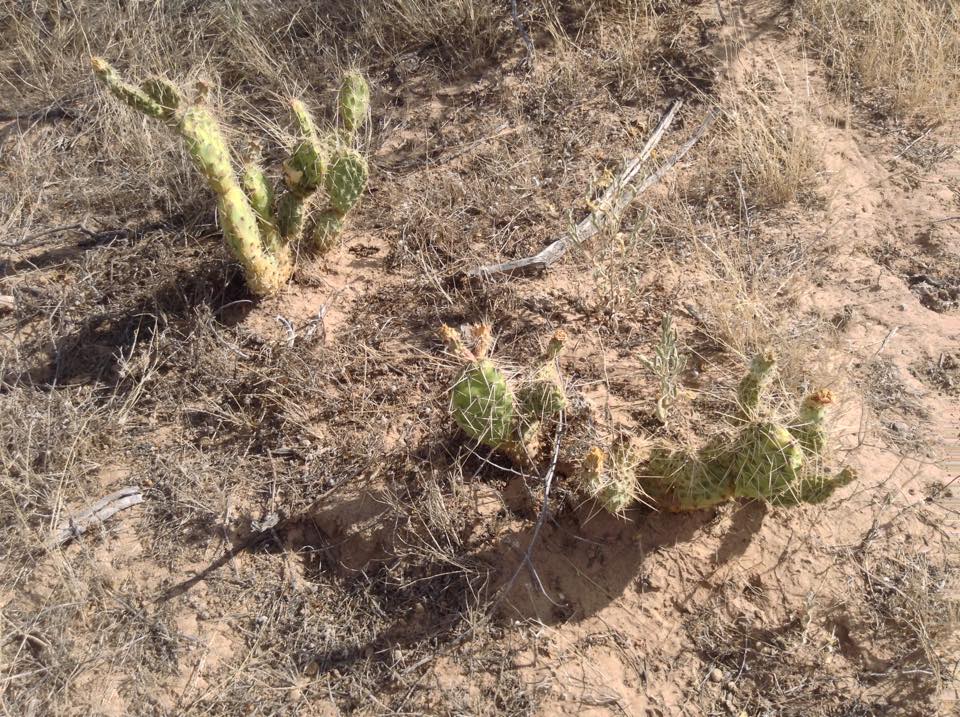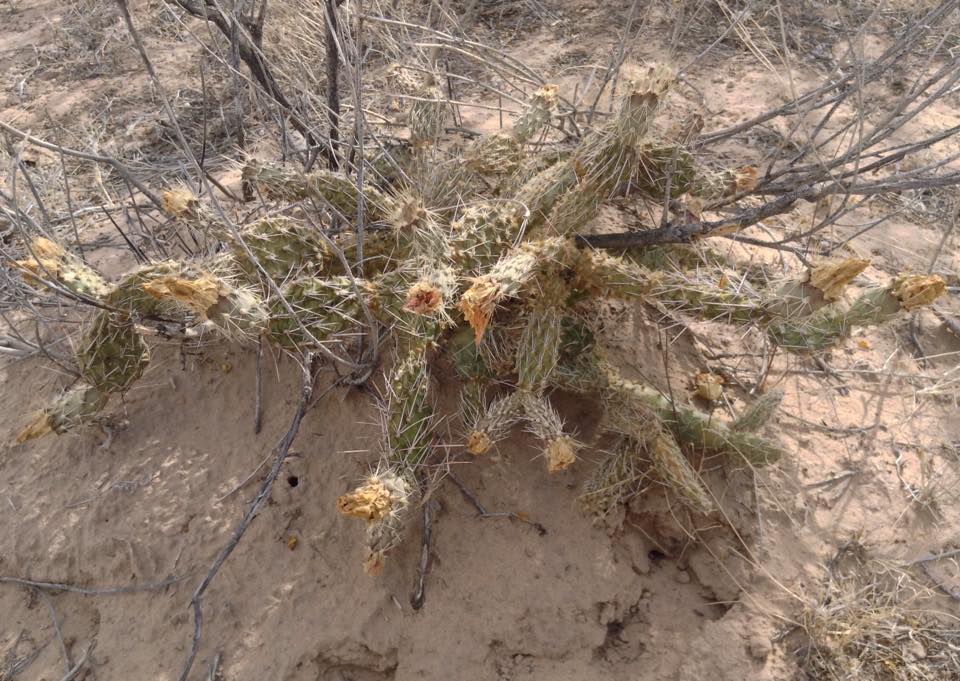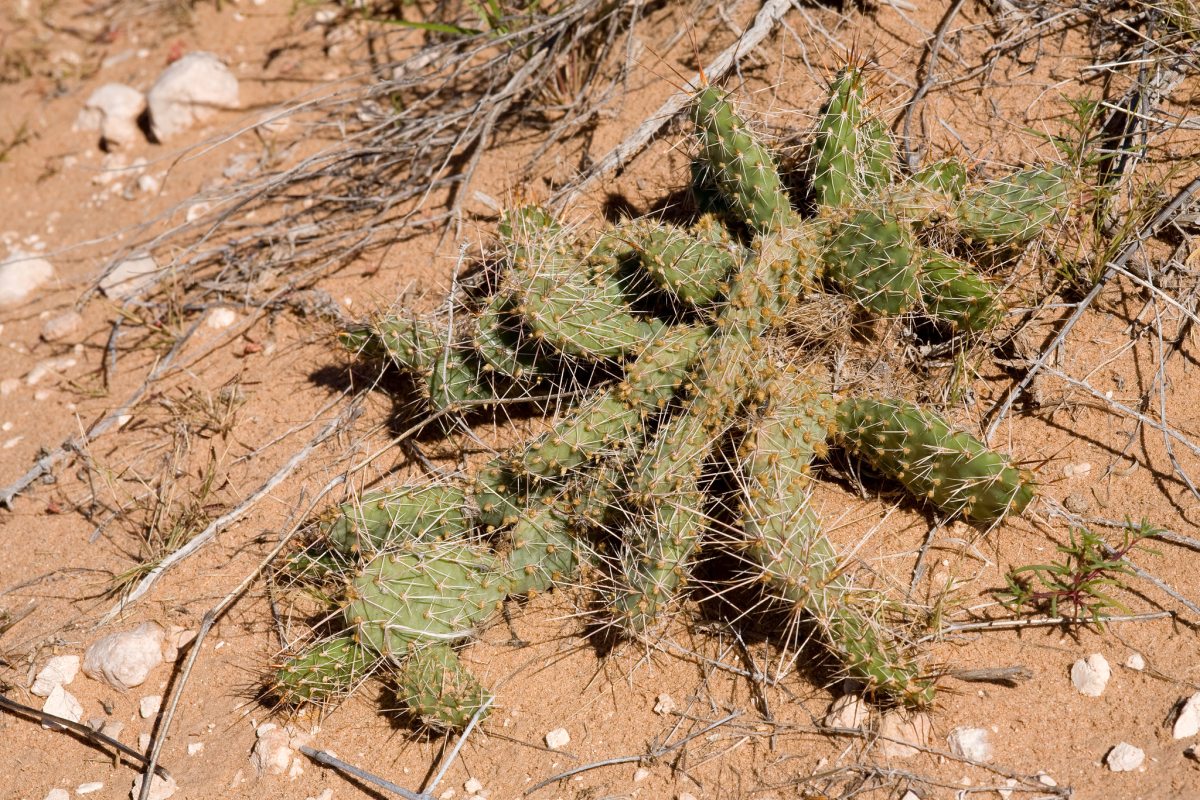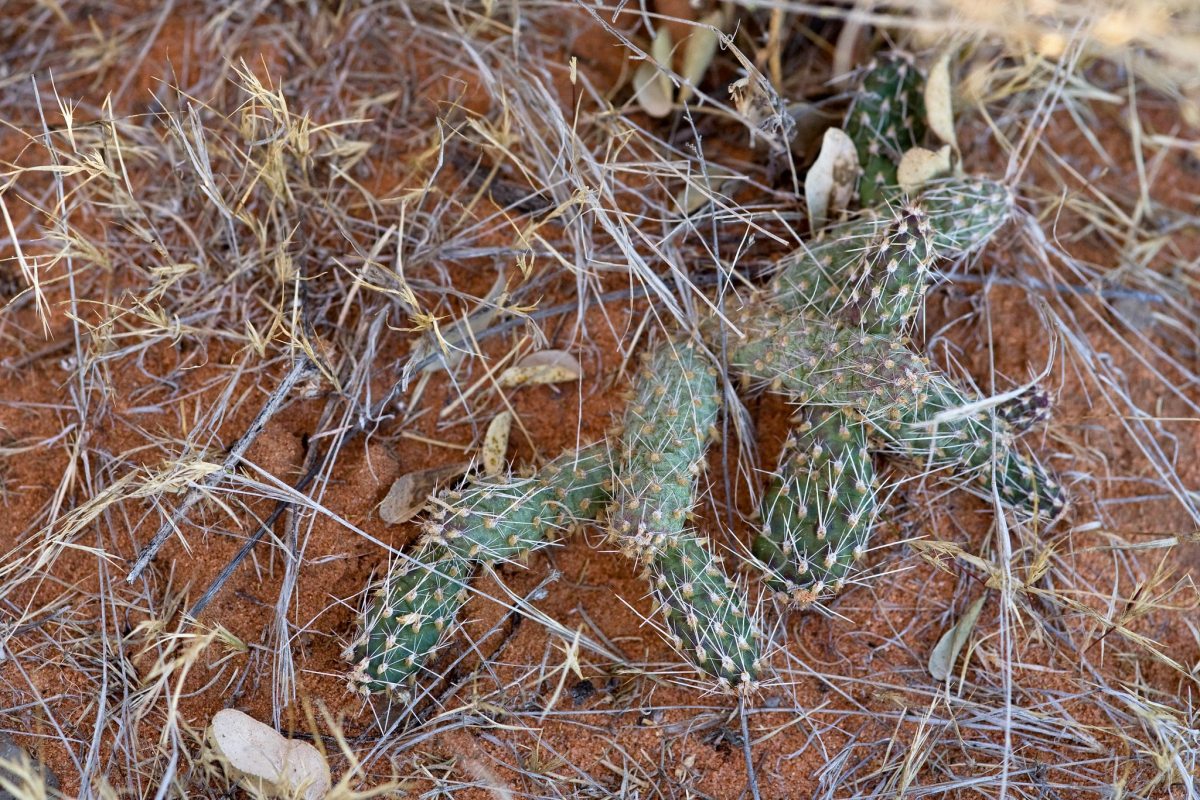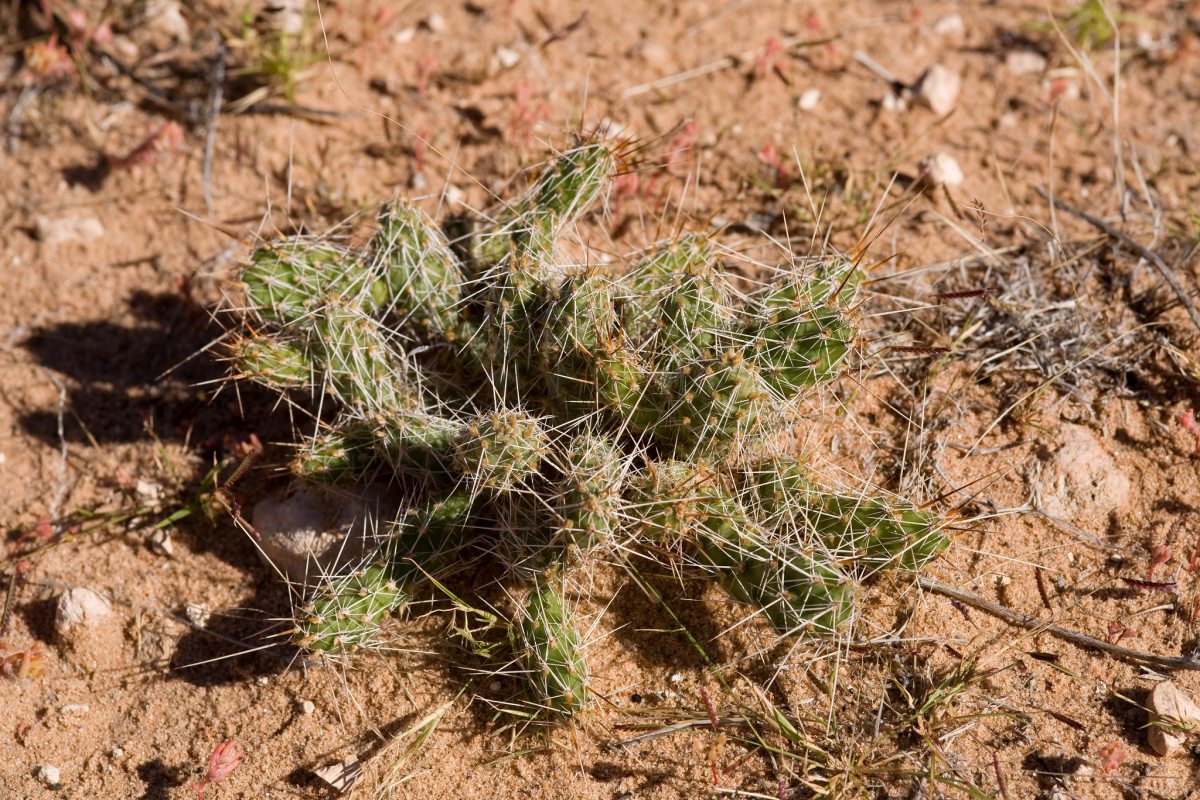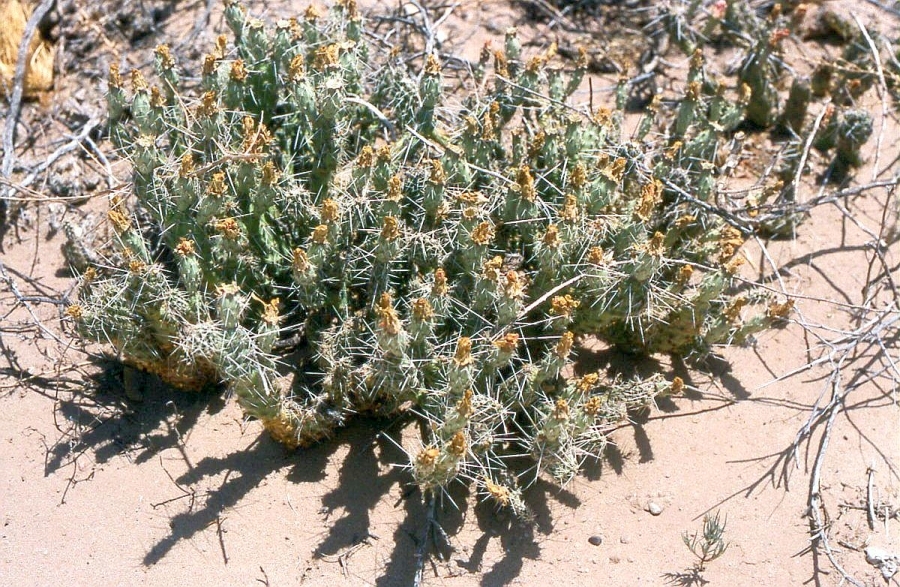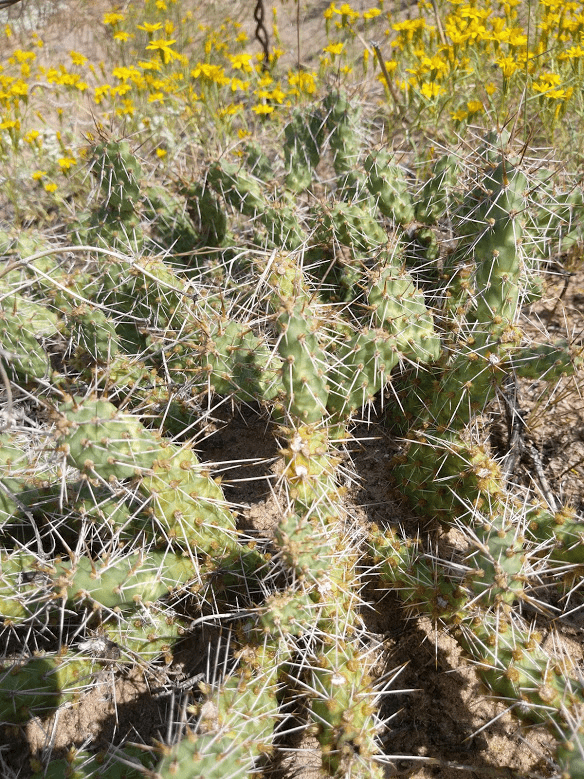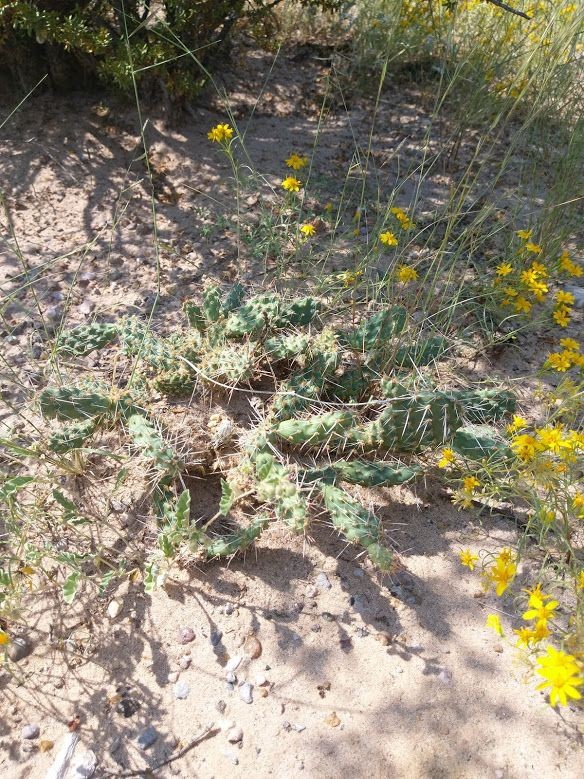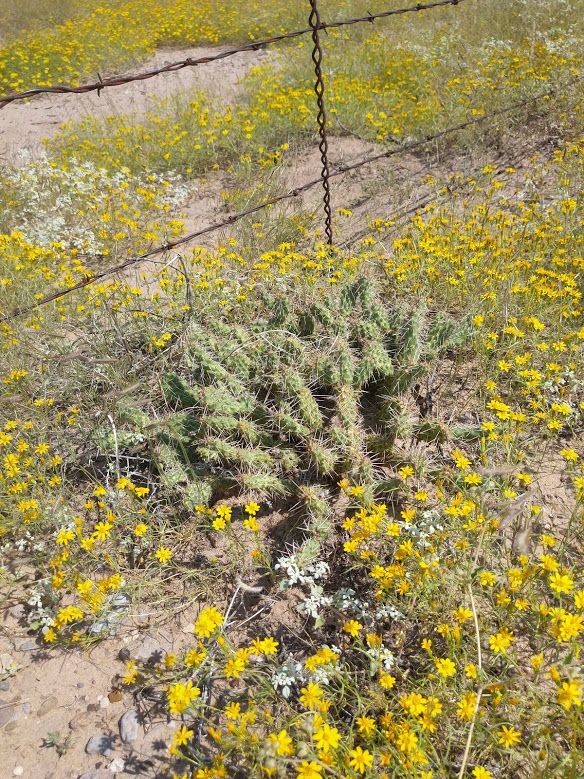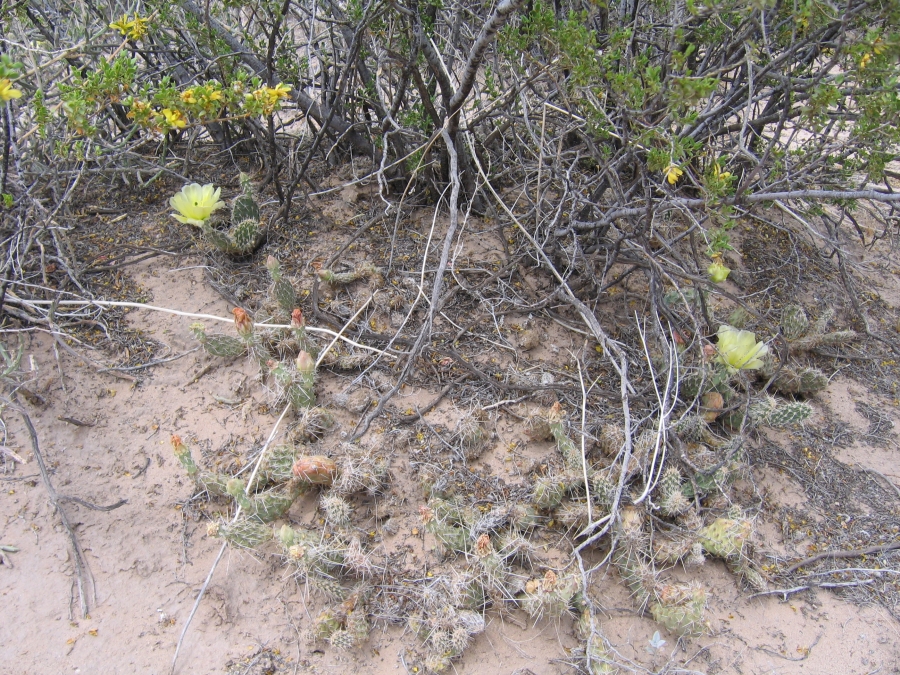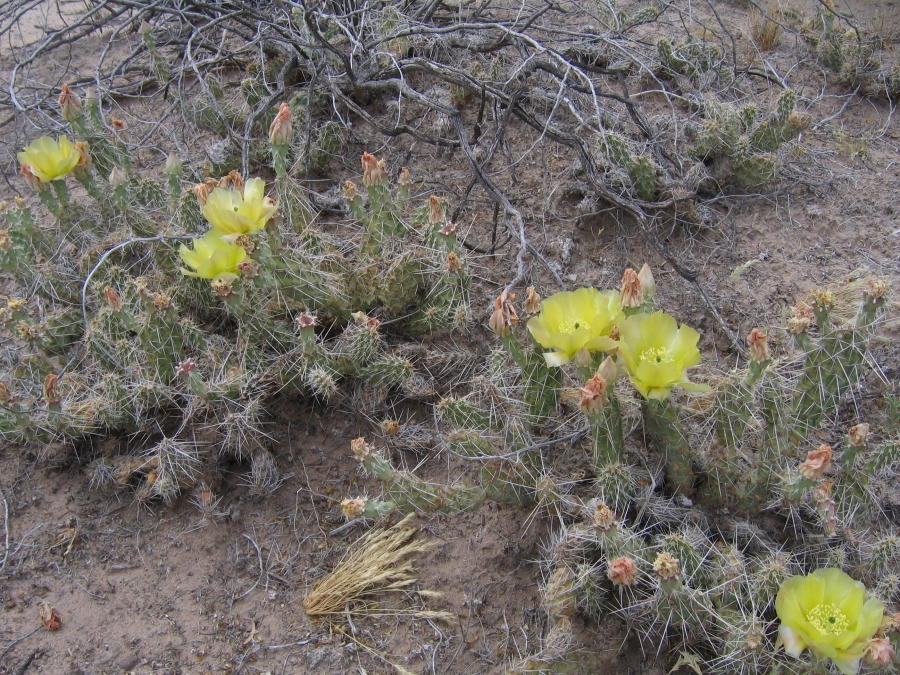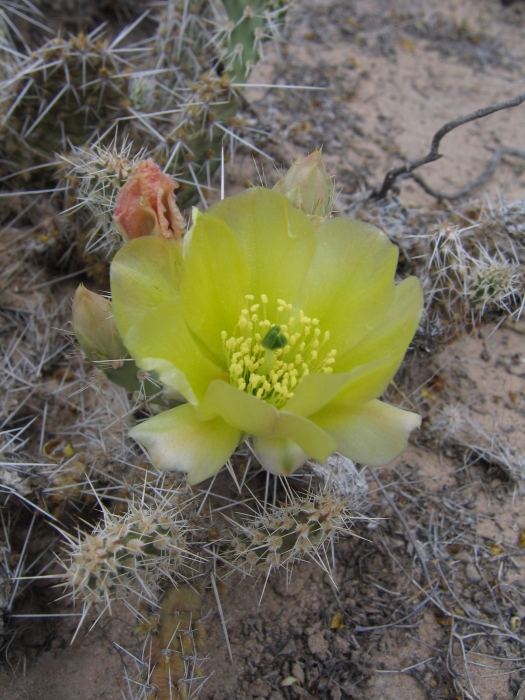
Engelmann, Proceedings of the American Academy of Arts and Sciences 3: 301, 1856/1857
Lectotype; Isotype; Herbarium; Herbarium; Herbarium; Herbarium
Original Citation
What is Opuntia arenaria?
Opuntia arenaria is a small, dry-fruited prickly pear of the greater El Paso region (adjacent New Mexico into far-west Texas), typically forming low, creeping mats on sandy or silty soils. Although sometimes treated within O. polyacantha, it is maintained here as a distinct species.
Details
Shrub: low, creeping to mounded, forming mats often 0.5–2 m across and about 15–30 cm tall. Cladodes: small and narrow for the complex; generally shorter and narrower than in O. polyacantha. Areoles: spination present on most areoles (lowest areoles sometimes weak), commonly with several slender spines and one longer primary spine; armament does not obscure the pad surface. Glochids: present in the areoles as in other Opuntia. Flowers: yellow; filaments pale (often white to faintly pinkish), anthers yellow; style white to pale-green; stigma green. Fruits: reddish, then tan and dry at maturity; narrowly obovate-obconic with a deep umbilicus; fruit areoles may bear a few short spines; seeds tan, shiny, relatively large.
From Powell and Weedin:
“Pads are 4–7(–10) × 2–3(–5) cm and 2–3 cm thick; areoles may have 5–10 spines with one much longer. Flowers are ~4–6.4 cm long and ~4–6 cm wide. Fruits are 2.5–3 cm long and 0.9–1.2 cm in diameter, narrowly obovate-obconic and dry at maturity; seeds to ~6.5 mm with a 1–2 mm margin.” (as quoted on this page)
Cytology and DNA
Diploid. GenBank locus JF787339.1.
Range & Habitat
Greater El Paso region from adjacent New Mexico to near McNary, Texas, on sandy or silty substrates; broader in Mexico as shown on this site.
Similar or Sympatric Species
O. trichophora — Compare overall habit and armament on its page; arenaria here presents as lower, creeping mats with smaller, narrower pads.
O. camanchica — Typically broader-padded and more robust; arenaria remains smaller-padded with a creeping habit.
O. phaeacantha — Often broader pads and a less creeping presentation; contrasts in pad size/shape and fruit expression are useful.
O. engelmannii — Larger shrubs with broader cladodes and heavier armament; arenaria is lower, narrower-padded, and lighter-armed.
O. lindheimeri — Tends to thicker, broader pads and stronger armament; arenaria keeps a narrower look and low, open mats.
Other Notes
O. arenaria is closely allied to other dry-fruited Opuntia, but the combination of its low chromosome number and consistent morphology supports recognition as a distinct species here. In contrast, larger varieties of O. polyacantha typically have cladodes >5 cm across and may show pink, red, or magenta petal pigmentation—traits not seen in O. arenaria. Cytologically, O. polyacantha is tetraploid (2n = 44), whereas O. arenaria is diploid (2n = 22), and the two are not known to occur sympatrically. In shifting sands, some branches may become partially buried.
For more information, see:
Root glochids and root spurs of Opuntia arenaria (Cactaceae), Boke, 1979

